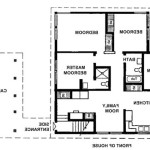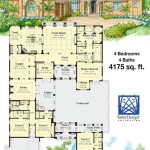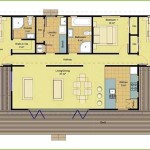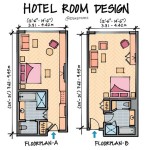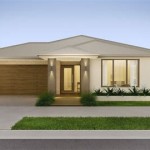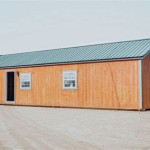Tiny houses have become a popular way of living in recent years, offering a unique and cozy way of life. Tiny house floor plans are an essential part of designing and building your own tiny house, as they provide a visual representation of the space and layout. This article will discuss some of the different types of tiny house floor plans, and the advantages and disadvantages of each.
Types of Floor Plans
There are a variety of floor plans available for tiny houses, ranging from simple one-room designs to more complex multi-level layouts. Some of the most common types of floor plans include:
- Single-level floor plans – This type of floor plan is typically used for smaller homes and is the simplest type of layout. It typically includes a single room, which can be used for the kitchen, living room, and bedroom.
- Multi-level floor plans – This type of floor plan is typically used for larger homes and includes multiple levels, allowing for a more spacious layout. It may include a kitchen, living room, bedroom, bathroom, and other rooms.
- Split-level floor plans – This type of floor plan is similar to the multi-level floor plans, but it includes two levels that are separated by a staircase. This type of floor plan is great for tiny houses since it allows for a more efficient use of space.
- Loft floor plans – This type of floor plan is typically used in tiny homes and includes a loft area that is usually used as a bedroom or living space.
Advantages of Tiny House Floor Plans
Tiny house floor plans offer a variety of advantages, including:
- Cost-effective – Tiny houses are usually much cheaper than traditional homes, making them a great option for those on a budget.
- Flexibility – Floor plans for tiny houses can be easily modified to accommodate different needs and preferences.
- Space-saving – Tiny house floor plans are designed to maximize the use of space, allowing for a more efficient use of the area.
- Environmentally friendly – Tiny houses are usually built with sustainable materials, making them a great option for those looking to reduce their carbon footprint.
Disadvantages of Tiny House Floor Plans
Although tiny house floor plans offer many advantages, they also have some drawbacks, including:
- Restrictions – Tiny houses may be subject to certain restrictions, such as size limits or zoning regulations.
- Difficult to find – Tiny house floor plans can be difficult to find, as they are not widely available.
- Limited options – Tiny houses typically have limited options when it comes to design, as they are usually built with limited materials and space.
- More difficult to build – Tiny house floor plans can be more difficult to build than traditional homes, as they require more precise measurements and craftsmanship.
Conclusion
Tiny house floor plans offer a unique and efficient way to live, but they also have some drawbacks that should be considered. It is important to research different tiny house floor plans to find the one that best suits your needs and preferences. With the right floor plan, you can turn your tiny house into a cozy and comfortable home.















Related Posts

